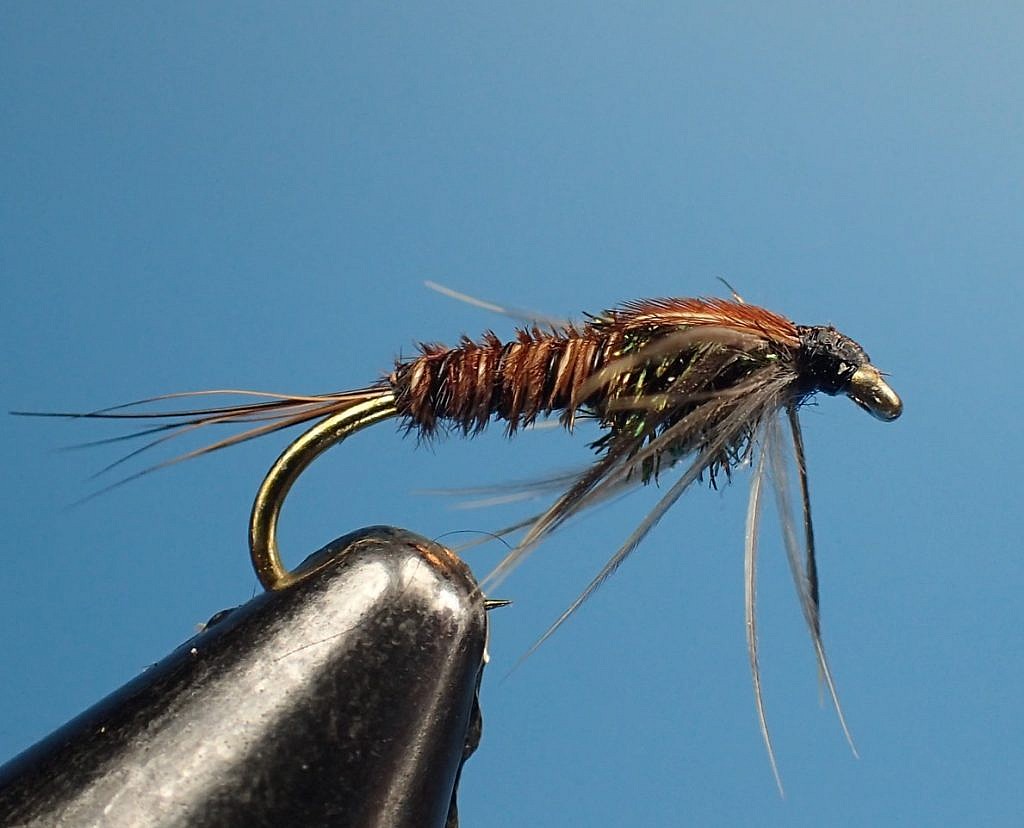
by Scott Sadil
For a fellow who often claims the fly doesn’t matter, it may seem strange that I would readily advocate, in the next breath, tying flies in camp or on the road. But throughout my career I’ve been a big fan of tying away from home, in part because I like nothing more than landing a good fish during, say, an evening session and then reporting to anyone who asks that I fooled the fish with “the last fly I tied” that same afternoon.
There’s more to it, of course. The probability that you might actually see something new, or have a fresh idea, even at this late date, is a big reason many of us remain inspired to return again and again to the water with the same enthusiasm that may have captivated us as wee lads. Sitting down at the vise with this latest insight in mind might offer the chance to improvise in a way we rarely do when we’re home at the bench, trying to crank out a dozen of these and a dozen of those, re-stocking gaps in our customary lineup.
I suspect I also came to enjoy tying away from home because, in many cases, there simply weren’t any other options for procuring flies if you found yourself in need of something that wasn’t already in your box. Or, more likely, boxes. (I know I’ve stated, here and elsewhere, that your fly doesn’t matter, a rhetorical pose I’m sure everyone can see through. The point, I hope, is obvious: Stop thinking about the fly and try, instead, to become a better angler.) In the remote waters I often fished, especially when young, you were on your own: Blessed with good sport, the lucky angler finds himself running short of his favorite patterns. Other flies, no doubt, will work, too. But who dares risk it – especially on those rare occasions when, finally, you have a chance to cream them.

The biggest challenge we face, however, when we try to imagine ourselves tying away from home, is deciding what, in the way of tools and materials, to bring, and how to go about carrying everything in some semblance of order. Daunting. I look back now with some fondness at the lowly improvised systems I’ve traveled with over the years, from a Tupperware bread box to plastic tool boxes to a no-longer-waterproof ditty bag that might as well have been a pillow case, tied to the end of a branch, for all it did to keep things arranged in the tidy manner in which they left home.
My advice? Upgrade and simplify. I know: Easier said than done. Yet, just as I think it’s a crime for tyers to give themselves but a cold cramped corner of garage or basement, or some other castaway pinch of turf for their meaningful work at the vise, I see no reason why you shouldn’t invest in a genuine travel tool kit and compartmentalized fly tying valise – even if your grade-schooler does have to end up waiting six months for his or her next iteration of iPhone or other can’t-live-without device.

Acquiring your travel kit, of course, is easy enough. Now the hard part: What do you need in the way of supplies?
This is where the advice to simplify, to show discipline and restraint, comes in. You can’t take everything. This editing process usually begins by considering where you’re going and what you’re fishing for. I know you would like to keep all of your travel tools together in one place, just in case. But maybe you don’t need that over-sized hair stacker if you’re fishing for spring creek trout in the middle of summer, and that dainty dubbing tool can probably stay home if you’re setting out for bait-chasing pelagics.

A decision or two about the tools you might need can help put you in the right frame of mind to begin assessing supplies, whether hooks, thread, or the myriad tying materials with which you have so carefully surrounded yourself at home. Of course you want to come prepared. But chances are, if you’ve done much of this sort of thing at all, you already have a pretty good idea what the bugs or bait look like, and what kind of flies you’ll reach for when the action heats up.
Stay with what you know. Yes, you may come upon a polliwog that fish are devouring with abandon. But I’m sure you can concoct some reasonable impression with pretty much the same hooks, thread, and materials you use to tie a stout Gold-Ribbed Hare’s Ear.

In other words, carry a little bit of this, a little bit of that.
After all, I’ll be the first to remind you: More days than not, your fly doesn’t matter.
Like many other fly fishers, Gray’s angling editor Scott Sadil believes the best reason to tie flies is that, in many cases, they’re better than ones you can buy.
